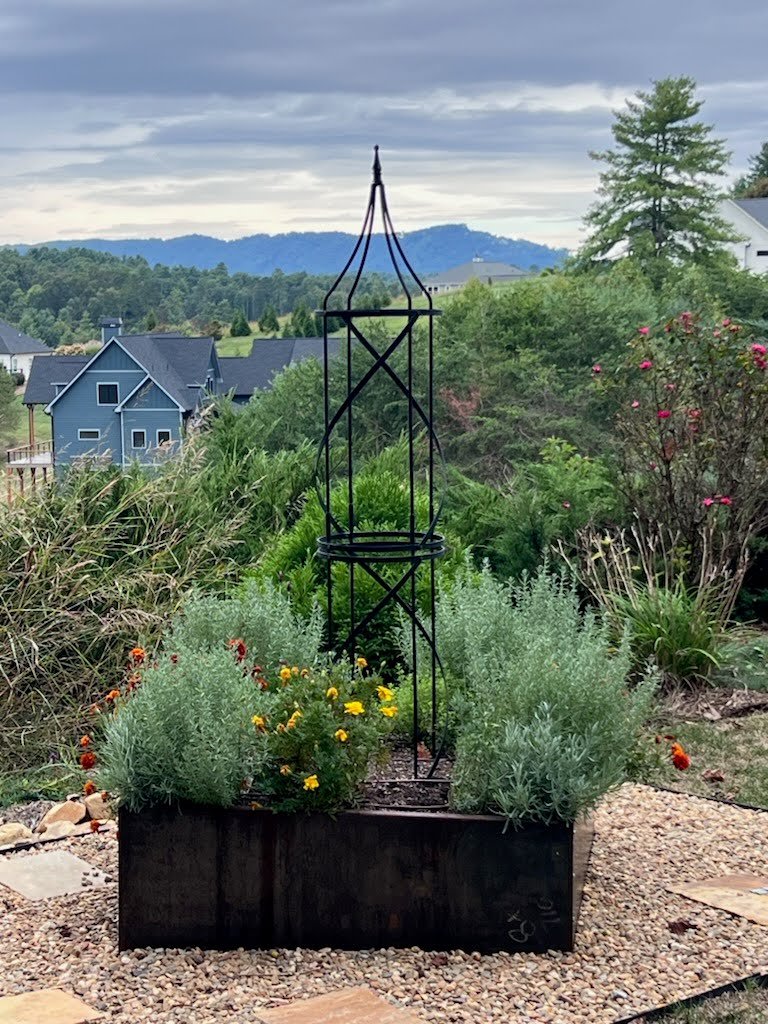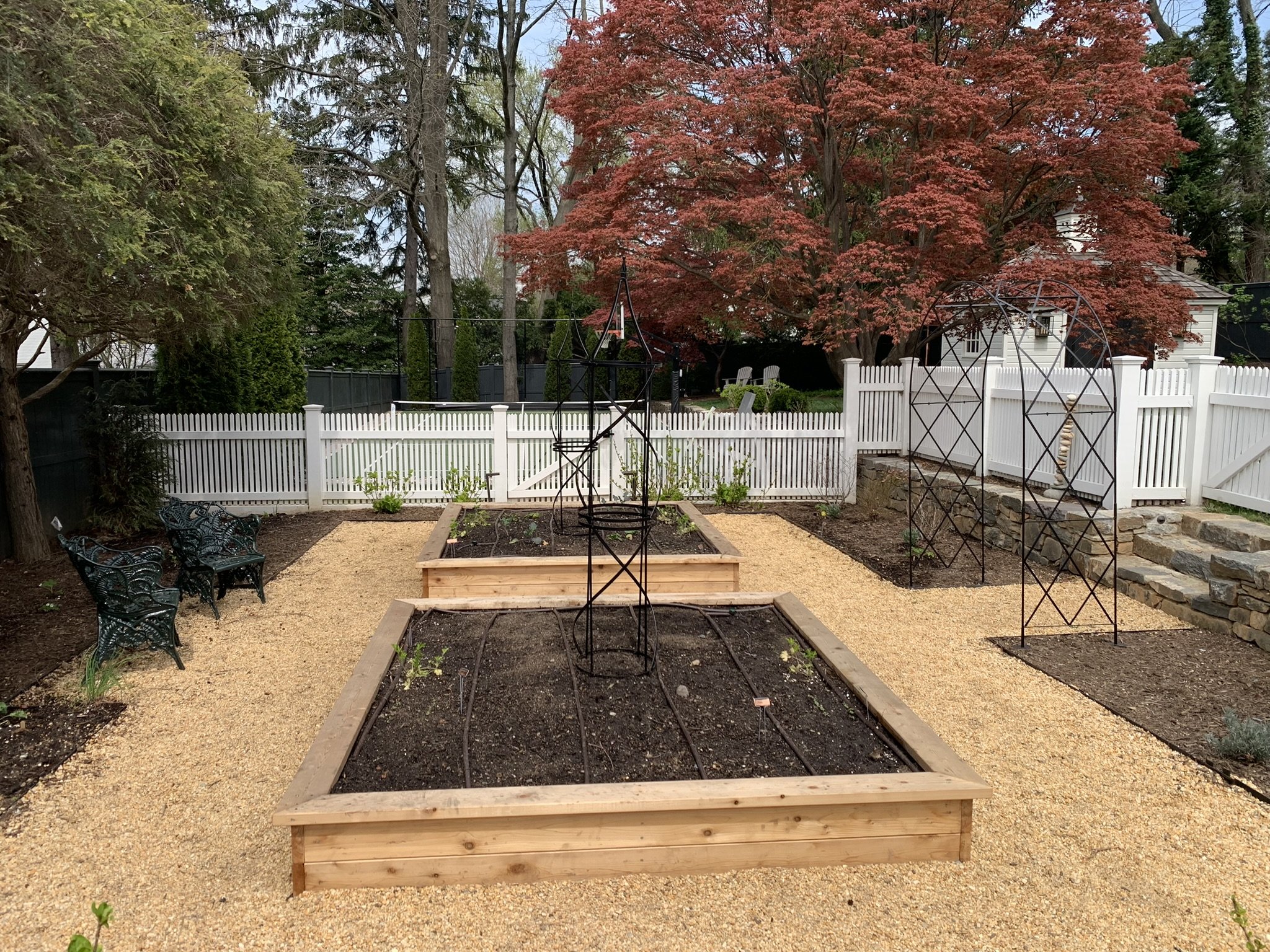How big of a garden do you actually need
Once you start growing your green thumb, stopping yourself from gardening will be more challenging than ever! Trust me, I’ve found myself in this situation more times than you’d think! By some kind of “force’, I keep adding beds, trying to use as much of my space as possible. And since I tend to get carried away whenever I’m in my zone, a tiny green nook has grown into something much larger. It’s still a little bit of a work in progress but the building is now done. This is one of the reasons I love building gardens for others. It satisfies that creative need, that outlet that I love. And since it is the season of consultations which hopefully will end with a big building season in the spring, I get lots of questions regarding the size of the garden. Most don’t want the size I have. It’s too much for them, either in work or in food. So what size garden do they actually need? Judging by the page you landed on, I’m pretty sure you’re asking yourself the same question…
Well, your ideal garden size depends on your needs, meaning there’s no right answer! In other words, you can go as big or small as you want as long as it satisfies your goals. My virtual consultations are a great place to get these questions answered and get the help with mapping out your family garden. But if you don’t have the time, that’s why I created this guide, so you know exactly how much space you need for growing all sorts of plants. Remember that it’s always okay to stray from your plans since your needs are bound to change over time, but if you’re just starting out, you may want to stick to initial guidelines.
Set Realistic Expectations
As previously mentioned, gardening is that kind of pastime you simply can’t get enough of. You may start with one raised garden bed, only to create a family garden much larger than you initially planned. While this kind of enthusiasm is always appreciated and encouraged, your garden size should best work for you.
In Gardenary, we focus on the W questions, Who is tending the garden? Who is visiting the garden? Why are we wanting a garden? What will it be built from? When will you have time to be in your garden? Literally all the questions.
Keep in mind that tending your garden requires a lot of work and attention. Once you start planting, you have to take care of your crops individually, ensuring that each one has its requirements met so it can provide a fruitful yield once it’s ready. This may not be too big of an issue if you have all the time in the world. However, we all know that the reality is much different than that.
With that said, before you get to planting, be sure that you can easily manage your garden size. That is, you should have enough time to dedicate to each plant, all the while attending to the rest of your family’s needs. Being realistic is the first step, and sticking to it is a must, no matter how much your enthusiasm carries you away. I normally recommend starting out small because you can always expand. If you start too large, you can get burned out! Once you have this settled, it’s time to get your hands dirty!
What Garden Size Is Ideal For Your Family?
In addition to your needs, the garden size you’re aiming for also depends on your area. For instance, you might be settled somewhere with a cooler climate, meaning warm-loving crops may have difficulty thriving in your family garden. That’s why you should consider going for plants that will surely bring enough yield year-round to satisfy your goals.
Let’s get into the actual number of your garden size. According to a UK study, a 4-member family who is leading a strict vegetarian-only diet and wants to grow their own food may need up to 4000 square feet of growing space. While this may tingle your green thumb, a family garden of this epic proportion not only requires a lot of work but also some real estate investments.
However, if you’re leading a non-vegetarian diet but still want to take care of your own crops as food, you’ll need about 200 square feet of space. Considering you have three other members in your family, this number rounds up to 800 square feet. That’s more than enough to keep you well-fed throughout the entire year! Still, you should keep in mind that some plants take up more space than others, meaning you should definitely consider mapping out your space efficiently before placing the seeds into the ground. On second thought, think about what kind of plants you want to grow, as this will also help you plan your garden bed size.
What Plants Should You Grow?
This is where the fun begins! To get the most out of your garden size or if you have little space, you should plant common vegetables and fruits that produce a lot of yield from a single plant - think tomatoes and potatoes. Additionally, to keep things interesting, don’t brush off the crops that bring just one vegetable to the table. Although they may take up more space, consider them an essential part of healthy and diversified nutrition. Their seeds are often a more economical investment than the plants. But depending on how you are growing, a variety of plants and seeds work best.
Here are some examples based on an individual's habits to give you a better sense of how large your garden size should be. Again, this is subject to change since all of us have different needs, so these numbers aren’t set in stone.
Leaves - Expect to harvest at least once from each plant every 30 days. In 1 sq. ft. planted with 4+ herbs or leafy greens, you could harvest 4 times in a 30-day period. You should be able to harvest leaves daily from an 8 ft. space.
Roots - Expect to harvest once from every 1/9 square feet every 60-90 days. Roots are generally only harvested once since you pull the entire plant.
Fruits - Expect to harvest weekly from one fruiting plant 60 to 90 days after planting. You'll harvest every 7 days until the plant finishes production.
This kind of planning may take some time to adjust to initially, but once you get the hang of how much harvesting is needed per plant per season, you’ll know exactly how many crops and space you’ll need. That said, tracking these numbers is a good idea so you don’t go overboard with your planting.Garden Planners for the win!
Get The Most Out Of Your Space
Lastly, there are a few tricks that will certainly help you get the most out of your garden size.
Firstly, consider planting succession plants. For instance, as plants finish for a season, pull them, add compost and plant something else. You can continue to grow in that spot as long as you replenish the nutrients and take into account sizing for ease of gardening.
Additionally, keep things interesting by planting different varieties of a certain plant. This will provide a steady flow of produce season-round, so you’ll always have produce even if some varieties were destroyed by the weather conditions and pests. And finally, add some high-calorie plants, such as corn, beans, and winter squash. These will surely keep your tummies full without paying too much attention to them.
As you can see, the ideal garden size is unique for everyone! That said, take note of how much you need of a certain plant and plan accordingly. Hopefully, you’ll maximize your space and enjoy every inch of your thriving green nook, no matter how big or small it maybe!
Care for some more gardening tips? Subscribe to my newsletter!



